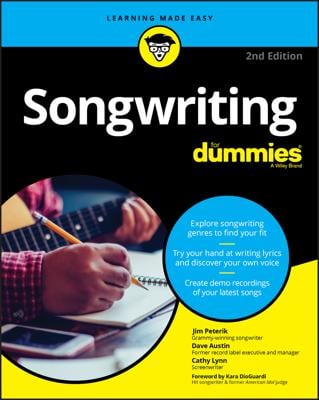If you've ever spent any time around a serious blues musician or music aficionado, you've probably heard the phrase "12 bar blues" tossed about. A bar is a musical phrase, a way of measuring the music against its rhythm, and blues songs are structured in a 12-bar format.
Defining bars and measures
The rhythm — not the tempo or relative speed of the music — is measured in a time signature. Ninety-nine percent of all blues music is played to a 4/4 time signature. If you can count to four (go ahead, 1-2-3-4 — hey, nice work!), you've just counted out exactly one bar of blues music.
The term bar is derived from each of the vertical lines that are drawn through a musical staff. (The staff is the set of horizontal lines on which musical notes are written.) The bar lines mark off metered units of a piece of music, which are called measures. The terms bar and measure are interchangeable.
To hear where the backbeat falls, just stress the 2 and 4 of a four-beat count (1-2-3-4, 1-2-3-4) and you've got your basic rhythm together. Now take that rhythm, speed it up or slow it down according to the tempo you want, and you've got the blues beat.
A standard blues progression generally consists of three chords that are usually, but not always, played in a major and rather than a minor key. In a 12-bar progression, each of those chords is assigned four bars of the progression (and that number may change depending on the song's structure).
Where does the number 12 figure in?
In basic, bare-bones blues, the main musical theme is expressed in the first four-bar line, and then repeated again in bars five through eight. The closing four bars usually cap the original theme line by putting a twist on it or summing up the original statement. And that adds up to 12 bars (or measures).
A musical theme is simply the melody that distinguishes one tune from another. The lyrical theme is the story line. And thyme is an herb.
To get an idea of how this works, take a look at the following example, a typical bar count for a standard 12-bar blues verse. (This 12-bar "chunk" is a stanza of the song lyric.) To hear the rhythm, count each number out loud. Below each metered line are the lyrics, which state a basic theme that's repeated in the second line, and then wrapped up in the closer.
1-2-3-4, 2-2-3-4, 3-2-3-4, 4-2-3-4
I woke up this morning, feeling oh so bad . . .
5-2-3-4, 6-2-3-4, 7-2-3-4, 8-2-3-4
I woke up this morning, feeling oh so bad . . .
9-2-3-4, 10-2-3-4, 11-2-3-4, 12-2-3-4
Thinking about my baby and it makes me oh so sad.
Turnarounds and stop time
In a 12-bar blues song, the final four bars are used as a musical resolve to finish off the verse. This four-bar figure typically either ends the song or sets up another 12-bar stanza. When it does the latter, it's referred to as a turnaround.
Mastering musical turnarounds that resolve on the third chord of a three-chord progression is an art form in and of itself. To hear resolves done to their best and most creative effect in a two-guitar format, check out the recordings of Muddy Waters or Jimmy Reed.
Another structural variant in 12-bar blues is something loosely referred to as stop time. The first four bars of a verse are extended to eight bars, and "breaks" or "stop time" figures are inserted to chop up the verse line. That eight-bar line is then appended to the remaining eight bars of a standard 12-bar blues progression. A perfect example of stop time is found in the Willie Dixon composition "I'm Your Hoochie Coochie Man," made famous by Muddy Waters.

